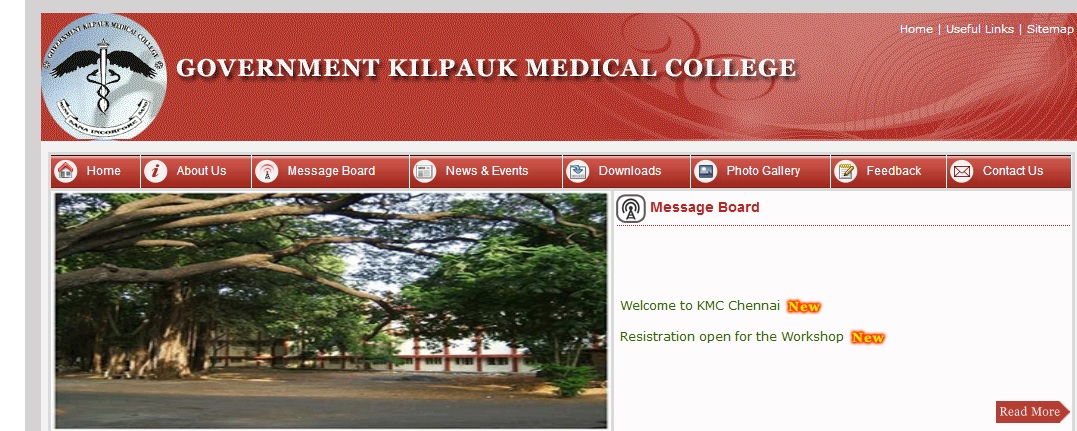Basic Science D.M Question Bank : gkmc.in
Name of the University : Government Kilpauk Medical College
Degree : D.M. DEGREE
Subject Code/Name : 1451/Basic Science
Year : IV
Document Type : Question Bank
Website : http://www.kmc.ac.in/kmc/
Download Model/Sample Question Paper :
2009-2010 : https://www.pdfquestion.in/uploads/gkmc.in/4110-68273.pdf
KMC Basic Science Question Bank
Sub. Code: 1451
D.M. DEGREE EXAMINATION
(Higher Specialities)
Related : GKMC Tuberculosis & Respiratory Diseases MD Question Bank : www.pdfquestion.in/4242.html
(Revised Regulations)
Branch I : Neurology
Paper I – BASIC SCIENCES (Consisting of Neuro anatomy, Neuro-physiology, Neuro chemistry, Neuro pathology, Neuro Microbiology, Parasitology, Immunology, Epidemiology and Genetics)
Q.P. Code: 161451
Time: Three hours
Maximum: 100 Marks

ANSWER ALL QUESTIONS :
Draw suitable diagrams wherever necessary. :
I. Essays: 2 x 20 = 40 Marks
1. Neurological complications of AIDS.
2. Describe the neuro anatomy and neuro physiological characteristics of the cerebellum.
II. Write short notes on: 10 x 6 = 60 Marks
1. Dermatome.
2. Poly microbial meningitis.
3. Substance –P.
4. Parkin Gene.
5. Neuro cysticercosis.
6. Evidence based medicine.
7. Kennedy syndrome.
8. Patho physiology of myoclonus.
9. Pedunculo pontine nucleus.
10. Sural nerve.
February 2011
(Candidates admitted from 2006-07 onwards)
Q.P. Code: 161411
Time: Three hours
Maximum: 100 Marks
ANSWER ALL QUESTIONS :
Draw suitable diagrams wherever necessary. :
I. Essays: 2 x 20 = 40 Marks
1. Discuss formation, circulation and absorption of cerebrospinal fluid.
2. Discuss neurobiology of memory.
II. Write short notes on: 10 x 6 = 60 Marks
1. Triplet repeat disorders.
2. Circle of Wills.
3. Toxoplasmosis.
4. Ion channels.
5. Visual pathway.
6. Pathophysiology of migraine.
7. Immunopathology of acute inflammatory demyelinating neuropathy.
8. Beta amyloid protein.
9. Parapontine reticular formation.
10. Tumefactive demyelination.
General Medicine Including Psychological Medicine :
Answer ALL questions :
Draw Suitable diagrams wherever necessary :
I. Essay Questions : (2 x 15 = 30)
1. Classify psychoses. Discuss clinical features, diagnosis and management of Manic-Depressive Psychosis.
2. Discuss aetiology, clinical assessment, and management of hypothyroidism. Add a note on myxoedema coma.
II. Write Short notes on : (10 x 5 = 50)
1. Management of Scorpion sting.
2. Management of community acquired pneumonia.
3. Leprosy reactions.
4. Tropical eosinophilia.
5. Atrial fibrillation.
6. Hypoglycemia.
7. Phenytoin.
8. Amyotrophic lateral sclerosis.
9. Gout.
10. Urticaria.
III. Short Answer Questions : (10 x 2 = 20)
1. List four metabolic/biochemical features of diabetic ketoacidosis.
2. Mention two indications and two contraindications for upper G I endoscopy.
3. Enumerate four causes of haemoptysis.
4. Mention four Liver Function tests used to assess liver disease.
5. Enumerate four manifestations/complications of severe falciparum malaria.
6. Mention four causes for eosinophilia.
7. Enumerate four indications for antivenin administration.
8. Mention four complications of obesity.
9. Enumerate four clinical features of Parkinson’s disease.
10. Mention four AIDS defining diseases.
August 2009
I. Essay Questions : (2 x 15 = 30)
1. Define and discuss the pathogenesis, clinical features and treatment of bronchial asthma.
2. Define, classify and discuss in detail about management of hypertension.
II. Write Short notes on : (10 x 5 = 50)
1. Depression.
2. Obsessive compulsive disease.
3. Von willebrand disease.
4. Infective endocarditis.
5. Alcoholic liver disease.
6. Guillain Barre syndrome.
7. Infectious mononucleosis.
8. Diabetes ketoacidosis.
9. Parkin sonisim.
10. Oral rehydration therapy.
III. Short Answer Questions : (10 x 2 = 20)
1. Two causes of acute kidney injury.
2. Two complications of portal hypertension.
3. Two contra indications to beta blockers.
4. Two causes of liver abscess.
5. Obsessive compulsive disorder.
6. Haemorrhagic ascitis.
7. Mention four anti epileptic drugs.
8. Clinical uses of fluroquinolones.
9. Bell’s palsy.
10. Causes of Bradycardia.
February 2010
I. Essay Questions : (2 x 15 = 30)
1. Describe the etiology, pathogenesis, clinical features and management of Guillain Barre syndrome.
2. Enumerate the causes, complication and management of HIV (Add a note on ART drugs).
II. Write Short notes on : (10 x 5 = 50)
1. Criteria for diagnosis of rheumatoid arthritis.
2. Pemphigus vulgaris.
3. Classify depression, discuss the treatment of depression.
4. Migraine.
5. Folic acid.
6. Arterial blood gases.
7. Computerized tomography in stroke.
8. Management of organophosphorus poison patient.
9. Schizophrenia.
10. Diagnosis and management of H1N1 infections.
III. Short Answer Questions : (10 x 2 = 20)
1. Four drugs used in multi drug resistant tuberculosis.
2. Two causes of non pitting pedal oedema.
3. Dot’s therapy.
4. Herpes zoster.
5. Causes of seronegative arthritis.
6. Third generation of cephalosporins.
7. Water hammer pulse.
8. Plasma pheresis.
9. Stem cell transplant.
10. Catatonia.
Medicine Including Children’S Diseases & Recent Advances :
I. Essay questions : (2 x 20 = 40)
1. Discuss pathology, clinical manifestations, diagnosis and management of amyloidosis.
2. Discuss pathophysiology, aetiology, clinical features, diagnosis and management of aortic stenosis.
II. Write short notes on : (10 x 6 = 60)
1. Temporal lobe epilepsy
2. Renal transplantation.
3. Primary complex
4. Universal Immunization
5. Arsenic poisoning.
6. Steven – Johnson syndrome
7. Marasmus
8. Magnesium deficiency
9. Diphtheria
10. Food poisoning